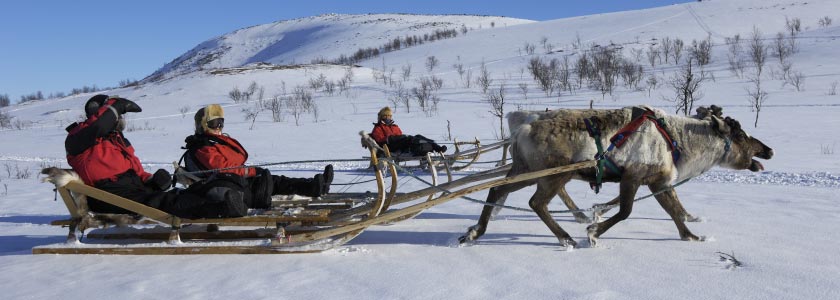Is tolerance to cold genetic in Humans?

For many, the stretch of warm weather brought on by the summer season often presents renewed opportunities to enjoy some of our favorite pastimes—gardening, hiking, backyard BBQs, family vacations, and soaking up plenty of sun. During these times, cold temperatures and, worse yet—feeling cold—become a distant memory.
Alternatively, maybe you are among those who would rather skip the heat to thrive in cold weather climates or seasons. Do you like the idea of living in or traveling to Alaska, Antarctica, or Greenland?
If the above rings true, you may not be in the majority, but there’s a good chance your genetic makeup equipped you to tolerate the cold better than other fair-weather humans.
The scientific reason why some humans have a lower colder tolerance than others
Building on various prior studies, researchers at Karolinska Institutet in Sweden recently put next generation sequencing technology to work to help us understand whether individuals who tolerate cold exposure comfortably have genetic differences from those who do not.
“Our study shows an improved cold tolerance in people lacking alpha-actinin-3 (ACTN3), which would have been an evolutionary survival advantage when moving to colder climates,” said co-senior study author Håkan Westerblad during an interview with LabRoots.
Westerblad and co-senior author Marius Brazaitis of Lithuanian Sports University asked 42 male participants ages 18-40 years old, with a mix of variant and non-variant genetic markers, to engage in 20-minute intermittent, whole-body immersion cooling intervals. Throughout this process, body temperatures, oxygen levels, heart rate, and muscle electrical activity were monitored, and then muscle biopsies were analyzed to measure the impact of cold on protein content and muscle fiber-type composition.
In the study, 69% of the individuals with the variant maintained core body temperatures of roughly 35° C for the complete duration of cold exposure. Only 30% of the individuals without the variant were able to maintain the same body temperature.
Participants with the variant also had higher rates of slow-twitch muscle fibers, which are more durable and energy-efficient, and are less likely to fatigue. In contrast, fast-twitch muscle fibers are more reactive, requiring increased energy consumption, also known as shivering.
As early humans began migrating out of Africa to colder climates, genes mutated
When early human populations left Africa, their levels of alpha-actinin-3 (ACTN3) proteins may have dropped, thus increasing their quantities of energy-conserving, slow-twitch muscle fibers. This evolutionary journey likely ensured their survival in the colder, harsher climates.
With this in mind, researchers sought to further substantiate their findings using RNA sequencing of mice. Upon conclusion, similar outcomes to those found in the human cold-water immersion experiment were noted, with the addition of increased small-fiber muscle twitching thought to be responsible for enhanced percentages of brown tissue body mass, which plays a predominant factor in heat generation in hibernating mammals and human infants.
Beyond the obvious advantage of providing additional insight into how humans evolved over time, this information has researchers wondering if modern day societies have led to new implications to this original, protective mutation.
Estimates indicate nearly 1.5 billion people worldwide may have an alpha-actinin-3 (ACTN3) protein deficiency
“While the energetically efficient heat generation in people with a deficiency in alpha-actinin-3 (ACTN3) would have been an advantage when moving to colder climates, it might actually be a disadvantage in modeacrn societies, where housing and clothing make cold protection less important, and where we basically have unlimited access to food, such that energy efficiency can impose a problem and result in obesity, type-2 diabetes, and other metabolic disorders” said Brazaitis.
And, while less newsworthy, this research provides those of us with an internal thermometer set to Artic chill a scientific leg to stand on. Go ahead, blame your high or low cold tolerance on your DNA!
